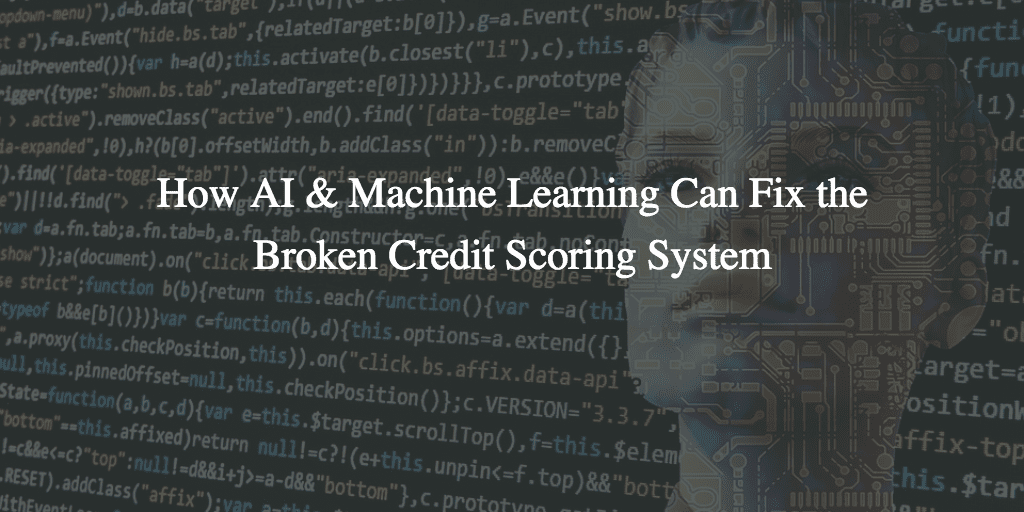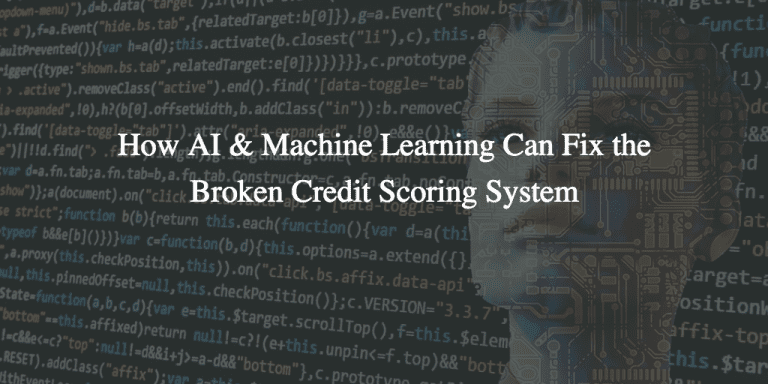
Editor’s Note: This is a guest post from Marc Stein, CEO at Underwrite.ai and Principal at Artificial Intelligence Capital Management. A longtime entrepreneur and startup CTO, he cofounded the first auction platform for student loans, College Loan Market, a marketplace for equipment leasing, LeaseQ, and ScholarshipWS, the search engine that drives many of the largest college scholarship search sites. He also served as CTO at Y2M Networks, sold to Viacom and the Student Loan Consolidation Program sold to JP Morgan Chase, and as Global CTO for the Giving Group, a UK entity that operates the world’s largest peer to peer charitable fundraising service. In his spare time, he works on applications of artificial intelligence towards problems in cancer diagnosis and genetic biomarker identification.]
I was recently on a panel at Money 20/20 in Copenhagen with the intriguing title “Credit scoring is broken: Striving for fairness and accuracy in a data-rich world”.
The question stuck with me beyond the panel itself. Is credit scoring broken? If so, when did it break? Who broke it? And, most importantly, why is it broken?
In a sense, the credit scoring system exists to minimize risk to lenders by focusing on the lending of money to people who have proven themselves to be low risks. The dominant scoring methodology in developed economies is solely focused on how people repay prior loans, how many loans they’ve already taken, and how many times they’ve applied for credit.
This works to simply exclude those without existing credit.
I recently worked on a study for a large lender that was testing into their decline population. This gave me some insight into the performance of thin and no-file applicants without FICO scores. What was most interesting about the results was that the overall portfolio had a charge-off rate of 10%, with the lowest performing cohort charging off at 22%. The FICO unscored group, who would almost always be denied credit, charged off at 14%.
So, in fact, the applicants with no score were quite profitable if lent to at the higher priced tiers and outperformed the low end of the approved spectrum.
But does this mean that the credit scoring system is broken? In itself, no. Lenders can loan to applicants with FICO scores at or above 700 with a fairly solid understanding of repayment risk. This leads to the extension of government subsidized credit to the lowest risk portion of the credit spectrum.
But this divides the society into three classes of people. Those with access to cheap credit from subsidized sources, those with access to expensive credit from leveraged sources, and those with no access to credit.
The disparity in credit access is baked into the credit scoring method. But why did this happen?
I propose a simple explanation. In order to create models that can be efficiently implemented, the problem of credit risk has been oversimplified. The current methodology in widespread use seeks to model risk using linear models with a small number of inputs.
Typical underwriting today consists of FICO, DTI, trade lines (e.g. 30 day late counts), and inquiry counts as inputs into linear regression based models. This works fairly well for the subset of the population with FICO scores at or above 700. But the further that you fall below the 700 FICO line, the less efficacy the model has. If you understand that credit risk is an inherently nonlinear problem, then this makes perfect sense. When you attempt to model a nonlinear problem using linear techniques you divide the problem set into two cohorts, a predictable set using the linear model, and a chaotic set. This chaotic set is the subprime space.
To effectively model the risk of subprime lending, you need to do two things. Input more data into the models and use nonlinear techniques to model the problem. At Underwrite.ai, we’ve found that whereas we can efficiently model prime lending risk with 40 attributes, we need thousands of attributes to model subprime risk with equal efficacy. For example, how someone pays apartment rent and utility bills is not especially predictive in the prime space, but it’s highly predictive in the subprime space.
We’re not going to address the issues of credit disparity and the corollary problem of income disparity until we start thinking about credit risk differently. But, this create tremendous opportunities for fintech entrepreneurs around the world. In the US, 70% of the population has well populated credit files and 50% of the files have score at or above 700. This means that 50% of the US population is underserved or unserved. In China, the picture is reversed. Only 30% of the population have credit files and only about 10% actually contain specific repayment data. This means that 90% of the 1.4 billion people in China are underserved or unserved in terms of credit access.
Banks will be slow to address the underserved markets due to their inherent aversion to risk. The P2P marketplace has largely focused on providing greater efficiency and price advantage to the same market served by banks. This creates a massive opportunity for those who can understand the nonlinear nature of the credit problem and deploy capital into these underserved markets. I’ve focused my work at Underwrite.ai on solving the technical problems of better understanding risk in underserved markets through machine learning, but the real impact will be driven by a new generation of startups focused on delivering credit to these markets.


